Recently, I had the opportunity to sit down for an interview with Oscar-winning director Michaël Dudok de Wit, whose The Red Turtle was co-produced with Studio Ghibli.
Michaël Dudok de Wit is the essence of multiculturalism in a time when it’s under threat in the United States and abroad. Born in The Netherlands, de Wit went to university in the United Kingdom, where he currently resides. His first feature, The Red Turtle, was co-produced by French producer Wild Bunch and Japan’s Studio Ghibli – the latter a first for Japan’s most revered animation studio.
The Red Turtle (currently receiving an Oscar-eligibility screening in Los Angeles – it will release nationwide on January 20, 2017) has received stellar reviews and is the subject of tremendous Oscar buzz – but de Wit is no stranger to that. He’s already won that particular statue – his Father and Daughter won the 2001 Academy Award for Best Animated Short Film. It was Father and Daughter that brought de Wit to the attention of Studio Ghibli – specifically producer and studio president Suzuki Toshio and legendary director Takahata Isao.
What follows is the remarkable story of how a Japanese animation company inspired a Dutch director to helm his first animated feature and in the process, captivate animation fans and film-goers worldwide. Mr. de Wit is a captivating and warm conversationalist, and the depth of his love for and understanding of Japan and its artistic culture is impressive. He’s also very much a lover of anime, and that came across during our conversation.
“The next voice you hear will be that of Michaël Dudok de Wit.”
Michaël Dudok de Wit : Hi, this is Mr. Next Voice.
Lost in Anime: Hello Mr. Next Voice! It’s a pleasure to speak with you. Obviously the movie is a big hit and you’ve done a ton of interviews, so I’d like to ask you a few more questions about the Ghibli connection if I could. I know you’ve been hearing a lot of the same questions over and over…
M: Please, don’t worry about that.
L: So, the first question I wanted to ask you is, when you got the letter from Takahata-san, it was a complete surprise for you?
M: Yes.
L: Can you describe for me what your instant reaction was when you received that letter?
M: Instantly… I feel strongly about Japan. There are just some countries we like more than others, and for me Japan is one of them. I’m just fascinated by the country. Also, I didn’t have the ambition to make a feature, but I didn’t exclude it either. I just didn’t see it as a reality. With Ghibli I immediately thought, if I make a feature with them, I can give a big chunk of my life over to making this movie.
L: And indeed you did!
M: Indeed, a very big chunk. Immediately I replied yes, and then asking if we could meet and discuss details. Because the invitation was totally direct, without subtlety. Another studio would have said “Let’s have a meal, discuss possibilities.” They just said “let’s work together.”
L: And was it Takahata who was the impetus from their side?
M: Actually, it was Suzuki, the producer. And it’s not that surprising because he’s quite a powerful influence on Takahata and Miyazaki. People in the West always hear more of Miyazaki and Takahata, but Suzuki has a very good feel about how to draw the best out of them. I’d met him briefly before, just smiling and talking. And he just said “Miyazaki and Takahata and myself love your short film “Father and Daughter” a lot.” They were embarrassingly positive about it. And so, on the basis of that, “We thought it would be interesting to see what it would be like if they made a feature.”
Suzuki’s first step was to contact Takahata and say “Are you in?” He didn’t speak about it with Miyazaki, just Takahata. And then the two of them approached their distributor in Paris, Wild Bunch. They needed a link in Europe. They know the market… So the three of them approached me.
L: So, a sort of sideline question which has always interested me. You’re obviously a very multicultural person – you’re Dutch, you went to school in the UK and you’re based there, and you have as I do a strong interest in Japan. One thing I’ve noticed over the years is that animation generally and Japanese animation specifically seems to find more resonance in France than any other Western country. I wonder if you have a theory as to why that might be.
M: Yes I do, but it may not be the complete picture. It may be simply that the first successful distributions of Ghibli’s films was in France. But the real reason is that there’s a huge, huge visual culture in France. Since my childhood I’ve noticed. They have a huge comics culture – incredibly large culture. Thousands of new titles are in bookstores all the time. It’s not the same thing as Japan, but it’s close to that. They were just naturally more curious. The animation culture blossomed very early in France with things like Lucky Luke, Tintin, etc.. But I’m still surprised that other countries were so slow in discovering Studio Ghibli. Why didn’t Channel 4 in Great Britain immediately recognize the beauty and start distributing them in the early 90’s? They were too exotic for their eyes, maybe.
L: I also think it’s very important to have an open idea of what animation can be, and the French have always seemed to have that. In the United States at least, it’s always struck me that animation is more pigeon-holed. It’s put into a “this is what animation is for” box and if it doesn’t meet that, it’s met with resistance.
M: Yes, I totally agree.
L: A quick question about Takahata and Miyazaki, who are such an interesting pair. Obviously you’re an artist, and quite a renowned one. Miyazaki is an animator – he does storyboards and a lot of key animation – but Takahata is not. As an animation director, what do you think is the difference in approach to directing a film with those two based on that distinction?
M: Yes, it’s very interesting. It’s unusual not to draw for a director of animation. Not unheard of, but unusual. I don’t think you can tell by the end result that one is physically an artist and the other is not. When I heard for the first time – literally, when the interpreter told me “Takahata is not an artist” I said “Excuse me – Takahata-san doesn’t draw? I’m sorry, I must have misunderstood you.” Nothing – he doesn’t draw anything! Suzuki-san the producer draws well, actually. He’s done calligraphy for many of their posters. From the inside, Miyazaki will retouch lots of bits and pieces when the other animators have gone home for the day. That’s something many animation directors like him, like me, do naturally. You just do it, it’s your instinct. You just want to improve it even more and you can do it quickly, you have the vision. Takahata can’t do that. I’ve never literally asked him if someone does go over the artwork as a final polishing on his films. I’m sorry, that’s quite a long answer to your question!
L: No, it’s fascinating! Touching on that, to me as someone who’s definitely not an artist and has no drawing skills whatsoever, it seems that visually there’s more of a consistent look with Miyazaki’s films, and I assume that’s the reason. Takahata is much more of a chameleon – he adapts the visual style to the material.
M: In fact that should have been included in my answer. Takahata has the liberty to change styles – he’s not stuck with a visual style. He can ask someone to create a new look. And Miyazaki will always make films based on his drawings, because he’s a magnificent artist when he does his comics and storyboards. And it would be totally wrong not to stay in his personal drawing style.
L: Speaking of personal drawing styles. I’ve heard you say this before, but it’s clear in your art not just for this film but in Father and Daughter and such, that you have a real love for Japanese art. Hokusai and his school, and Chinese art as well. Do you think that’s one of the things that Suzuki saw in your work that drew him to you as a potential partner with Ghibli?
M: I do, but he never said so. He stayed with their love of Father and Daughter and he gave the biggest compliment he could – he said both he and Takahata thought to them, Father and Daughter is a Japanese film. Takahata definitely looks at it from a philosophical point of view. Takahata would say “Father and Daughter is not a Christian film”, because they often interchange the word “European” with “Christian”. It sounds odd to us but I just keep in mind he means European, or Western. It’s closer to the Japanese spirit. He refers to the story itself… But also to the visual approach.
L: That seems to be true with The Red Turtle to an extent. It’s not recognizably a Ghibli film in terms of visual style, but when I watch it I feel as if I’m watching a Japanese film.
M: Do you know Sylvain Chomet, who did The Illusionist?
L: Yes.
M: With tremendous respect to Sylvain, I don’t think they would have asked him to do a work with them. He likes to caricature people, to tease the audience, to observe how bizarre people are. With the Japanese, or at least with Studio Ghibli, that is not their priority. However many villains there are in their films, they have a great respect for human nature. It’s not unique – I have that too. I’ve got a thing with nature in general. I feel a strong connection with nature, they do too. They do culturally, but certainly with Ghibli and Miyazaki there’s a strong connection with nature.
L: It did seem to me with “The Red Turtle” that one of the themes you’re fascinated with… Certainly the power of nature, but also the dual nature of human beings. We’re a part of nature whether we want to be or not, but we’re always trying to set ourselves above and apart from it.
M: That’s very interesting – oh, very interesting. No one’s put it that way, but I would say so. Or I would say it differently, but maybe it’s the same thing. The story starts with very much man having a conflict with nature. He doesn’t want to be there. He is not comfortable. He has food, he has the right temperature, he has water, but apart from that he is in conflict. But he evolves, he grows. He is at peace with nature. Even though nature can kill. And this peace with nature becomes softer and more harmonious as we progress in the film.
L: I would love to go on about that for hours, but one other thing I thought would be an interesting thing to know. This is your first feature-length film. I’m sure one of the things that had to change is that when you were doing short films, you were able to do a great deal of the drawing yourself. But with a feature film, I’m assuming… I mean, Miyazaki is notorious for doing a lot of it himself, but I’m assuming you had to let other artists handle a lot of the actual drawing. Was that a difficult transition?
M: Yeah. And a big worry, also. Actually, one of the first questions I asked Ghibli, in one of our first meetings was “Can I borrow some of your animators?” Because the good ones there are so good. They immediately said no, they need them there. And to my surprise they said “For us, it’s difficult to get really good animators.” You would have thought there would be good animators queueing up to work at Studio Ghibli, but it’s not the case. And besides, I think a Japanese animator who doesn’t speak English or French could have been a problem with the team, because there was so much communication going on.
To come back to your question, my biggest worry was, the fewer animators you have, the closer it is to the vision of the artist. It’s inevitable that when you have a big team, you find some sort of middle-of-the-road look or feel to the animations, because you have so many different personalities working on the same animation. So my biggest worry was that even though the designs were very interesting and the animators were very carefully selected, the end result will look a bit like, wishy-washy. Like fine and professional and clear, but we would lose a lot of that personal charm. So that was my worry, and it had a foundation, because I see it happening in other projects. But I was pleasantly surprised when the animated scenes started coming in. And I looked at the animation and I thought “Oh, it’s excellent.” And actually, the film has enough character when it was finished.
L: I would wholeheartedly agree with that. To expand on that, as I’m sure you know, in the United States there isn’t a whole lot of non-CGI animation done these days. Ghibli themselves have more or less shut down as a feature studio, though now there’s word that Miyazaki has decided yet again that he wants to direct one more feature-length film. I wonder if you could comment on how you see the future of hand-drawn animation, because obviously it’s only through hand-drawn animation that you’re going to get the kind of personality you describe. How do you see the future of hand-drawn animation generally and of Studio Ghibli specifically, trying to survive as their two great lions sail off into the sunset?
M: Oh, that’s another subject. Ghibli has very clearly confirmed that Miyazaki has retired. He works on short films, using Photoshop and other software. Takahata is… To work on Kaguya he had to overcome a resistance, because he’s not young. And it’s tough for a director, the long hours. He was passionate about the project, bit it took Suzuki to convince him. He kind of stimulated him, pushed him, “Please, please make another film.” I’ve been surprised numerous times by Studio Ghibli. They were very honest and very clear that it was time to stop, but they are capable of doing something against everyone’s expectations so I keep an open mind there.
It’s obvious, it’s very hard at their age to make a feature. It’s very demanding physically, so if they’ve chosen to stop it’s totally understandable. So what was the other part of the question?
L: Just generally if you think there’s a long-term future for hand-drawn animation.
M: My answer is yes, but honestly – that answer is also wishful thinking. I have no way of analyzing the market. CGI animation, 3D animation, is so incredibly present among the films that are eligible for the Academy Award nominations. I recognize this as beautiful too.
L: I agree.
M: And also very efficient. Lots of people can work on the same character, and it stays in the same style. But there’s something about hand-drawn – it has a unique charm which computer animation can’t imitate. It’s the charm of imperfection. And I draw a direct line with music. You know, I was born in the early 50’s. I’ve seen the transition from acoustic music to amplified music to digital music, sampling… To totally synthesized music. All the artificial sounds which have been invented and used beautifully over the past half-century. But this has not stopped ordinary acoustic instruments from being wildly popular. Simple guitar, simple piano, cello, saxophone… People need to hear that imperfection.
L: That’s the Japanese idea of Wabi-Sabi right there, the beauty of imperfection.
M: Yes, you’re right! It is indeed.
L: You’ve described it perfectly – and I don’t think I’ve ever heard a more concise description of why we need 2D animation. It’s why we need acoustic instruments, it’s why we need analog recording. There is a charm in imperfection. That’s why I feel as if, in Japan at least, hand-drawn will survive, because they do have this concept of Wabi-Sabi more so than many of us in the West do.
M: Yes, me too.
L: But in any event… I suppose my last question, because I know your time is limited, is this: we’re in the midst of a great cultural upheaval here. And obviously in Europe you have the Brexit situation – being in the U.K. you’re living through that. When there’s so much unsettled in the world, so much division, do you think directors and writers are under more pressure to treat movies as escapism, or is there more of an incentive to do something that reflects what’s happening in society?
M: Wow, what a question! It’s definitely both… But is there a tendency in one direction or the other direction? I must say, since the last election there’s a huge desire for escapism.
L: Understandably.
M: Yes, understandably. I really don’t know. I would love to hear someone reflect on that, I really don’t know. There is both. Yeah, I don’t know. It’s not answering your question, but I can speak from a creator’s point of view. I’m the same as I was when I was a teenager – I have a compulsion to create. I know many people are very very talented, including in my own family, but they don’t have a compulsion to create. It’s more like a hobby, or an occasional thing they do. It’s not a profession, it’s a vocation, and you just have to do it. I’ve never ever thought when I was creating something, “Is this escapism or is this reflecting our times?” But I’m only speaking for myself. I’m not political. In that sense I’m definitely not answering your question.
L: No – you answered it exactly as I hoped you would! Because all you can do is answer it from a personal perspective.
Well, to close I’ll only say that in the community of anime – people who love anime generally and Ghibli specifically – I think The Red Turtle has been overwhelmingly well-received. I know this was your first feature, I know you’ve said it was a big chunk of your life, and you haven’t decided on your next one. But certainly just from my personal perspective I can’t wait, and I hope you do decide to direct another feature.
M: Thank you very much for that compliment.
L: Because you do have a unique vision and people with a unique vision, especially in animation, are something we should always treasure.
M: Wow, thank you so much, that’s very kind. I quickly want to say, it’s a pity we’re not sitting at a table with a beer because there are so many things I want to ask you – you have a strong link with Japan. And also, I just had a flash image of Your Name by Makoto Shinkai. I don’t know if you’ve seen it yet, the feature called “Your Name”?
L: Yes, I saw it in fact in L.A. in July. And of course it’s become a huge hit in Japan, as I’m sure you know.
M: Yes. And that’s an example of a film that reflects the current situation. It’s very much about identity with gender, and perception of manhood and womanhood… I think it reflects something about Japan, where boys are getting less interested in girls and marriage. I mean, it’s worrying, the population is going down in Japan. And then Shinkai makes a film where a boy is not sure if he is a boy or not – I think that’s very interesting.
L: I agree, very interesting. And speaking of artists who have a personal vision, Shinkai certainly fits that category. He’s a remarkable artist. I think it is encouraging for the future of anime that the top-grossing films of the last two years are both animated, and neither one of them was produced by Studio Ghibli. Between Hosoda Mamoru and Shinkai and others, animation in Japan has a future whether Miyazaki and Takahata and Studio Ghibli are part of it or not.
M: Absolutely.
L: But those of us like you and me who love Ghibli, I’m sure are hoping they are a part of it.
M: Indeed. And are you familiar with the short films by Koji Yamamura?
L: Yes, indeed.
M: OK, because he, I think is also a huge inspiration. It’s a different part of the market, but he oozes originality and personality.
L: Well, all I can say, Sir, is that I’m envisioning that beer and having the opportunity to discuss this at length because it would be a great time! It’s so nice to speak with people who have an appreciation for the uniqueness of Japan. And the culture there is so fascinating, with so much diversity in the artistic side of Japanese culture. I have a friend who’s lived there for over 20 years and he still in no way feels as if he knows the country. It’s still a mystery to him. And that’s one of the things I love about Japan, that no matter how much you study it – even if you live there – the mystery will always remain. Because it’s just a mysterious place. And beautiful.
M: And they will remind you always that you are an outsider.
L: They certainly will! They did with me very often. They’re wonderful people but they are definitely “we”, and as Westerners we are not a part of their “we”. And they will never hesitate to remind you of that. But not in a negative way – they just want to make sure you understand “Japanese” is different from “not Japanese”. And they’re certainly right.
M: Indeed.
L: Again, thank you very much for your time – we’re really looking forward to seeing where you go next. And good luck with the Oscar nominations – I feel very strongly that The Red Turtle will receive one, but I’m going to be rooting for you.
M: Oh, that would be so good. Thank you very much!


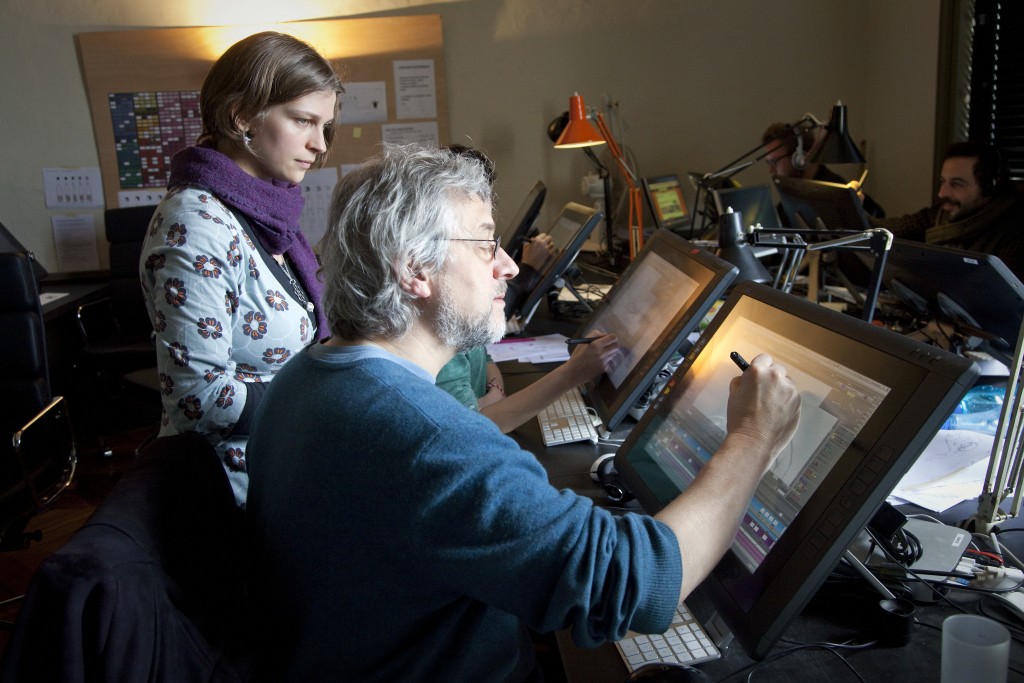
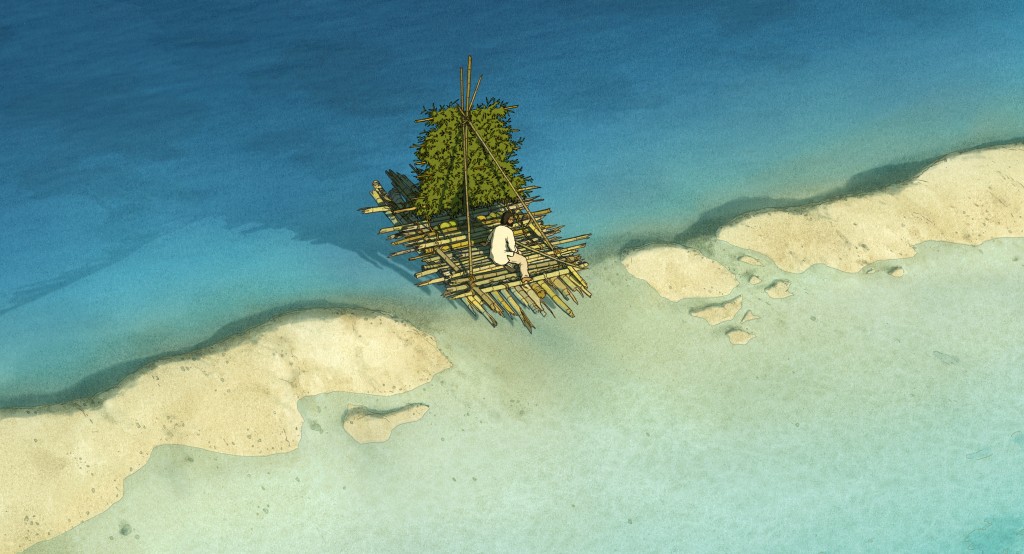

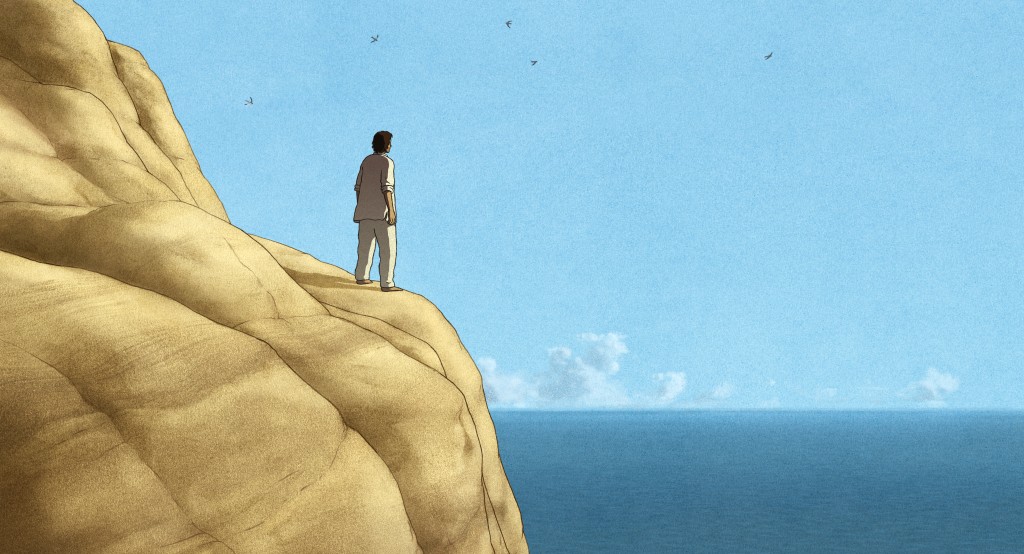
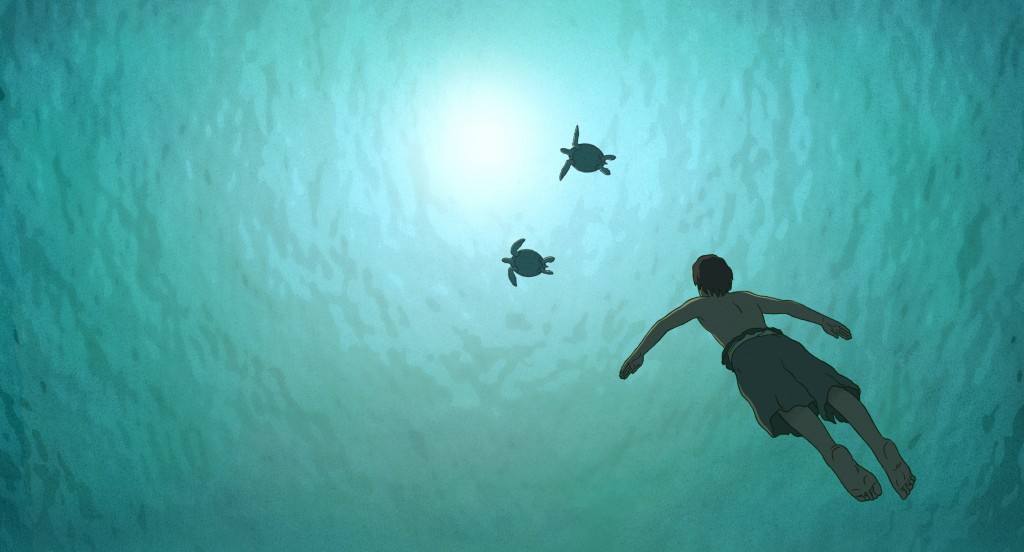
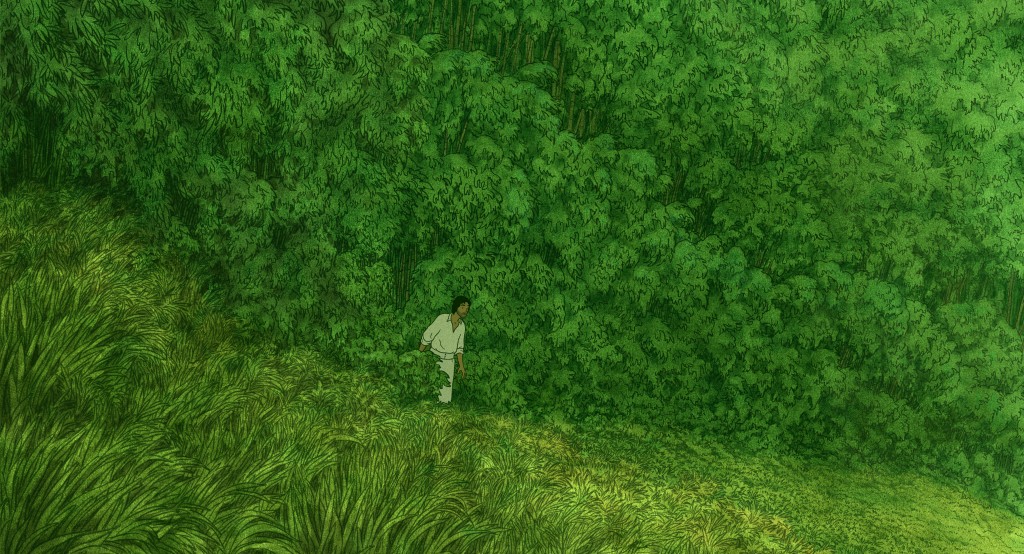
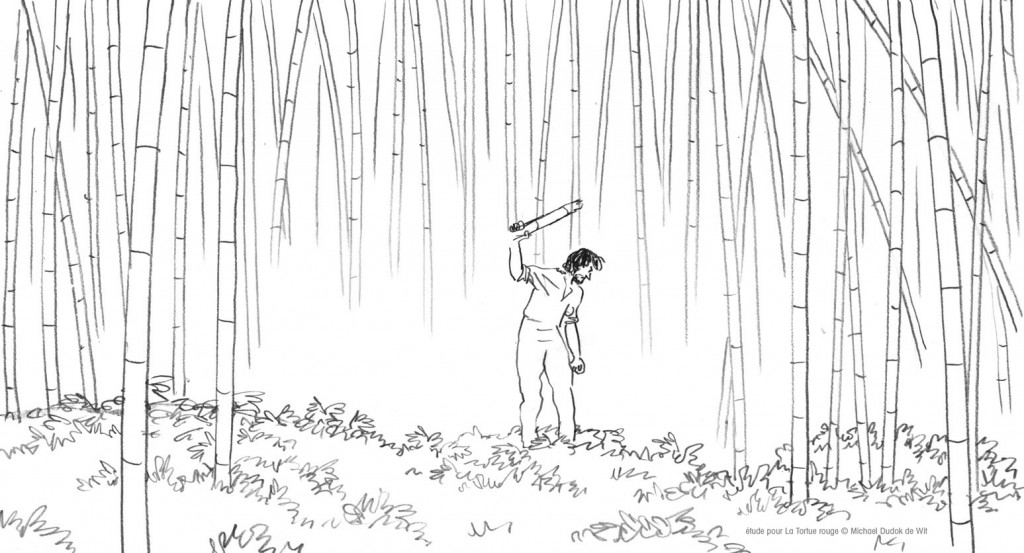

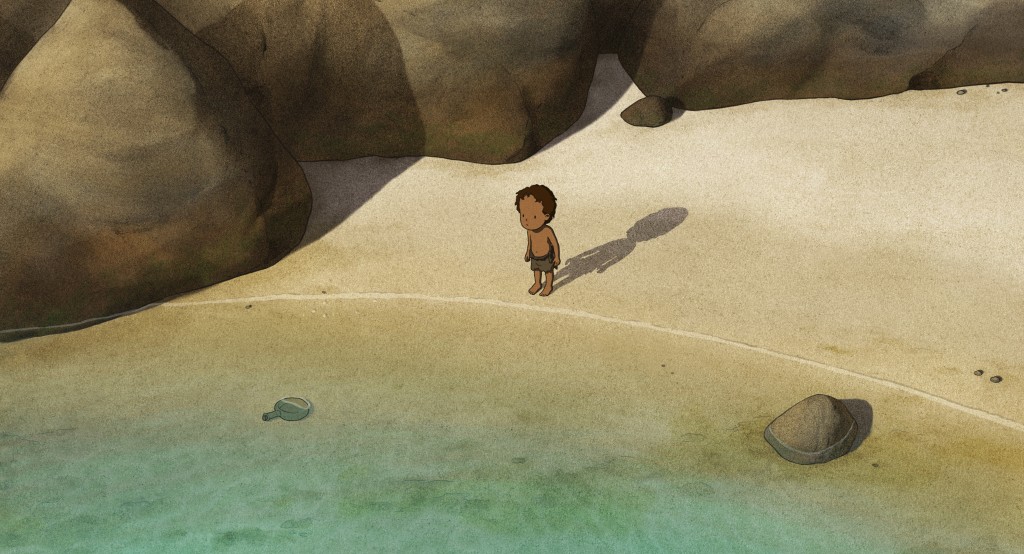



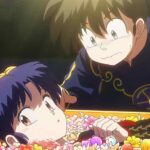
Blubbly
November 21, 2016 at 10:51 amReally enjoyed the interview and the questions, Enzo. Pity we didn’t get more, to be honest. It really looked like both of you were aligned in thoughts and opinions. I love the enthusiastic and passionate answers he made in regards to art and Japan. Will definitely check out the red turtle when it releases in my home country.
Guardian Enzo
November 21, 2016 at 11:01 amThanks! We went over on time as is – he’s here to promote, you know, so he has a lot on his schedule before he goes back to Europe. He’s definitely enthusiastic and passionate, both about Japan and generally. I really got the sense he enjoyed being asked more Japan-related questions than he was used to hearing.
JJ
November 21, 2016 at 11:14 amWait, Takahata doesn’t draw at all?! I knew he was more hands-off than Miyazaki but not to this extent, and obviously I wasn’t aware of the reason until now.
I’ve only got thanks for conducting this interview. Make sure you get that beer with Michael if you’re ever round these parts.
Guardian Enzo
November 21, 2016 at 1:24 pmLondon?
JJ
November 21, 2016 at 2:15 pmYeah, that’s where I’m at currently, as with so many things in the UK it’s where the money is. Although I’m still nowhere near Michael’s place of work so for all the good it does me I may as well be back up North!
RowanWaves
November 21, 2016 at 12:57 pmWhat a lovely and elegant interview! Thanks for conducting it – it’s always more enjoyable to read an interview when the questions are more in depth, and you get a sense of true rapport.
elianthos
November 21, 2016 at 1:10 pmDefinitely interesting and thoughtful on both sides. And you placed a whopper of a question with the art as escapism in present times.
Well done and informative. This has made me even more eager to see the move now.
Ryan
November 21, 2016 at 1:42 pmGreat interview Enzo, and I hope there are many more interviews to come in the future with other luminaries in the industry!
Wait, so The Red Turtle didn’t have any animation done by Ghibli? What exactly does co-produced by Ghibli mean then?
Guardian Enzo
November 21, 2016 at 1:47 pmBasically, it means they paid for a part of it (probably close to 50-50 with Wild Bunch) and provided support. Takahata-sensei is listed as an “Artistic Producer” on the film, and he specifically provided advice to de Wit on story and editing and such. Michael had never done a feature before this one and it seemed to me that Takahata was a significant support, as was Suzuki.
Lotor IV
November 28, 2016 at 2:19 amSounds more like name recognition than anything.
Guardian Enzo
November 28, 2016 at 7:43 amNo, not at all. de Wit has described Takahata as a very active participant and Ghibli started the entire process. I guarantee you they were a major funder.
Steph
November 21, 2016 at 5:00 pmGreat interview and questions!! Hope to see more in the future
Flower
November 21, 2016 at 5:18 pmI also agree wholeheartedly with the analogy of hand drawn animation, “hearing the imperfection” in acoustic music, and correlating it to the aesthetic of wabi-sabi (at least to the degree that I understand it).
Definitely my favorite part of an interesting interview – thank you (both!) very much! ^^
Yann
November 22, 2016 at 1:28 pmVery cool… I could get used to these interviews!
Can’t wait for this to come out in NYC.
Madwho
November 22, 2016 at 11:40 pmI really hope you guys find time to catch that beer together – this was an enlightening and thoroughly enjoyable read. Thank you for this!
mika
November 23, 2016 at 6:20 amVery interesting interview. More please!
Nadavu
November 24, 2016 at 4:07 amEnzo branching out to field reporting! Way to go!
An awesome interview, no doubt..
tata
November 26, 2016 at 4:52 amgood job enzo
mweloo
November 26, 2016 at 8:35 amThat was a very enlightening conversation between two intellectuals I regard highly. It was a pleasure reading this, Enzo; I hope you’ll do more when the opportunities present themselves.
saras
November 27, 2016 at 4:53 amWhat a wonderful and insightful interview! I really enjoyed it. De Wit seems like a deep yet delightful man. I hope the universe will align itself in some way so you can grab a beer with him someday somewhere – hey, you never know.
Thank you so much for this, Enzo.
Justinnnnnn
November 27, 2016 at 8:55 pmGreat review Enzo, love reading these.